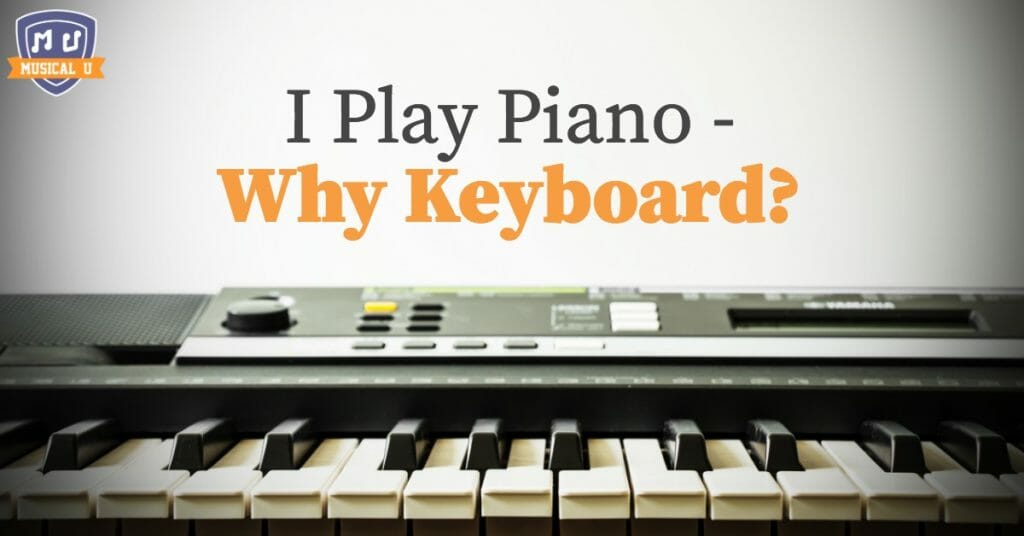Ask a musician, and there’s a good chance they’ll tell you that the piano is either their main instrument, or they have some knowledge of it – whether they play it as a second instrument or have just fiddled around on it at some point in their musical journey.
A piano is a wonderfully expressive instrument that can create a variety of sounds and convey a wide range of moods.
But even with the undeniable beauty of both the sound and the instrument itself, there are some definite limitations.
Let’s say you’re a pianist who owns a grand piano, and your nephew, who lives some miles away from you, is getting married. As a wedding gift, you want to play the happy couple a collection of tunes you’ve compiled.
But how easy do you think it will be for you to get your instrument there? It’s a bulky instrument to transport, and you’ll probably find yourself wishing for an instrument that is more portable.
So, what can you do? Can you get an instrument that is smaller and cheaper, but still sounds and feels almost like the piano?
Yes, you can: the humble keyboard.
The Difference Between a Keyboard and a Piano
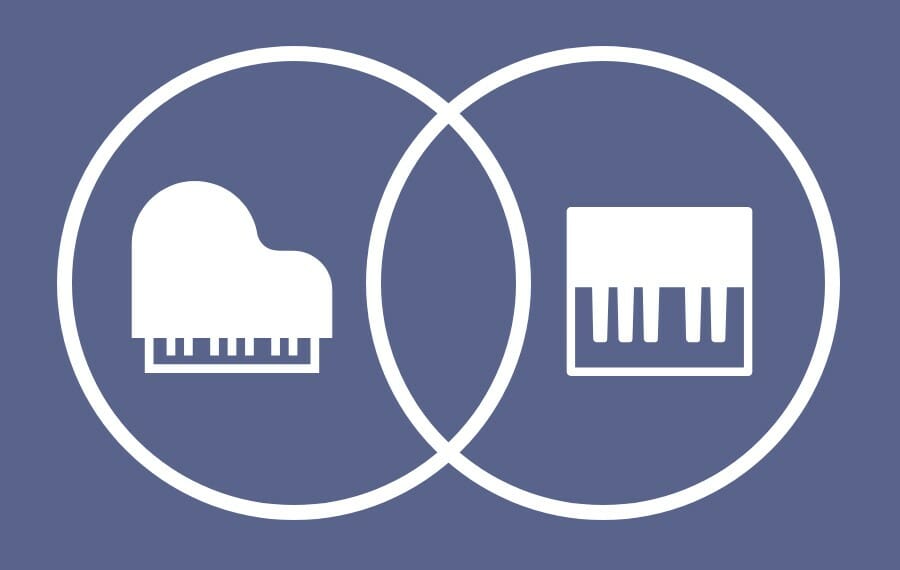
A piano is a mechanical instrument that comes with weighted keys while the keyboard is an electrical emulator of the piano.
They differ in many ways, including sound, features, and cost. Each has their own advantages and drawbacks. Let’s explore that.
Piano
Pros: A piano comes with weighted keys that are good for strengthening your fingers while playing. When you accidentally graze on an occasional incorrect note while playing, it becomes less noticeable because of the weightiness on the keys.
Cons: A piano can be expensive, and it comes with high maintenance costs. Also, a piano is large and bulky, and always comes with 88 keys – not exactly what you’d call portable.
Keyboard
Pros: You pay a fraction of the cost of a piano and less maintenance is required. With the touch of a button, you can change the sounds and add timing, beats, and effects, giving you a great many options for playing and performance. You can connect the instrument to a computer and use it to create music with a digital audio workstation. Lastly, keyboards come in different sizes and different numbers of keys, so you can choose the instrument that suits you best.
Cons: Not all keyboards function as realistic emulators of the piano. The feel and sound will never be totally identical to an acoustic piano.
So, What Can a Keyboard Do for Piano Players?
This question is commonly asked by many pianists, since they see a keyboard as a low-level instrument.
Most brands that produce keyboards are focusing greatly on improving instrument experience and reducing the limitations that come with it – narrowing the gap between the keyboard and the piano.
For pianists, a keyboard can be a fantastic sidekick – a light, portable instrument that you can use for gigs and for on-the-road practice, and perhaps even a tool to experiment with different sounds, effects, and styles.
Things To Consider Before Buying a Keyboard
If you are wondering what to look for in a keyboard, here are some qualities to consider before you head out and make a purchase. Decide what’s most important for you to have in a keyboard, and narrow your search…
Available Sounds and Styles
A keyboard comes with a selection of sounds and beats that you can use to play different music styles. Depending on what your keyboard offers, you can play blues, classical, jazz piano, or even modern electronic music.
A keyboard is a wonderful tool for musical exploration because it enables you to try out different sounds and styles with just the press of a button.
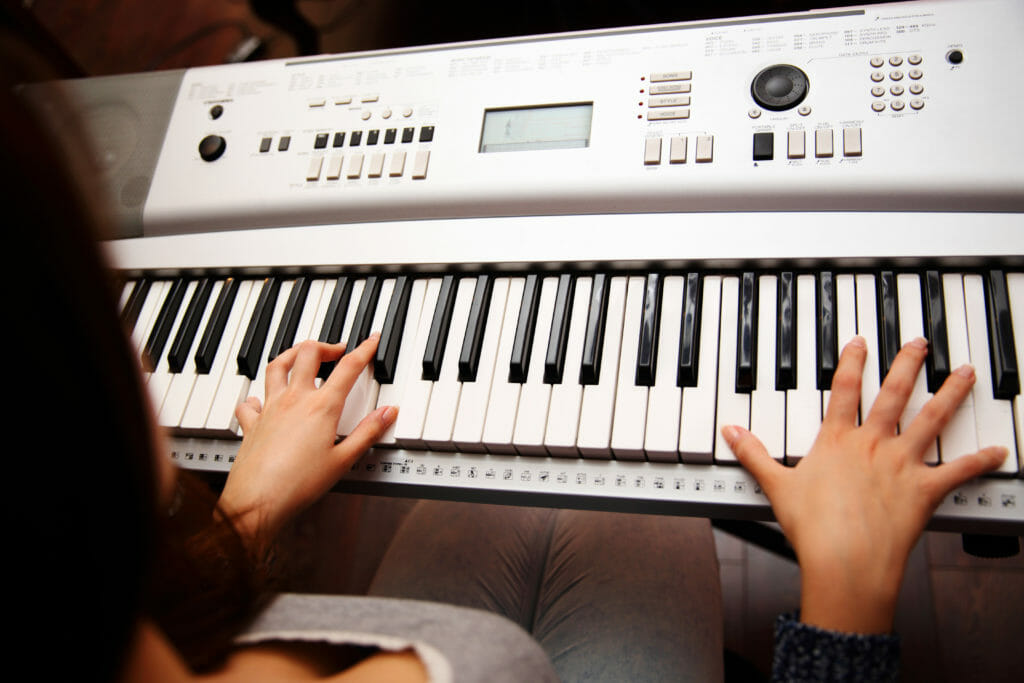
For example, you can choose a pre-programmed rock beat from a variety of options, and play chords overtop the beat with your left hand. Then, you can use your right hand to play a guitar sound to add a little something extra, and boom – you’re a one-person rock band.
Additionally, many keyboards include options for attack, decay, sustain, and release – parameters that alter the feel of the notes you’re playing and add a new color to music, which is a feature not available on a piano.
Think about what parameters you want to be able to experiment with, and find a keyboard that matches your desires.
Different Size and Feel of the Keys
Some portable keyboards have small keys that have a plastic feel – and this can be a deal breaker. Pianists often find that switching to a light and unweighted instrument can prove a bit challenging while your hand is adjusting to the lightweight keys.
Fortunately, you can find many models that offer a more realistic experience with their weighted, full-size keys. Even better, you can find an instrument with touch sensitivity, meaning the harder you press a key, the louder the resulting sound.
Keyboard Range
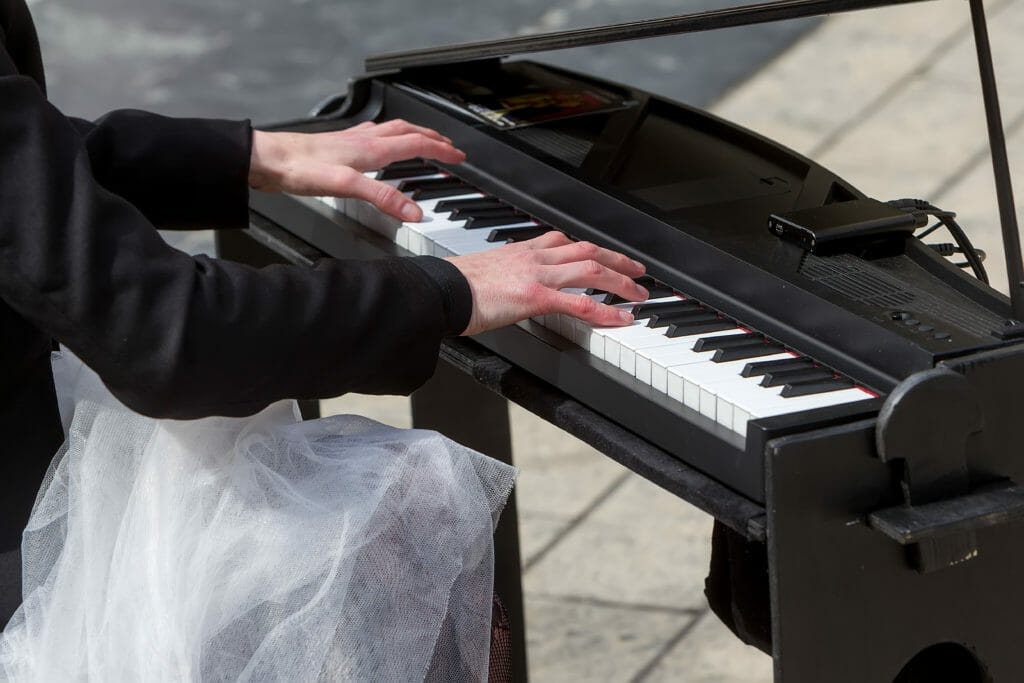 If all you know is piano, you are probably used to 88 notes ranging from A0 to C8. However, keyboards can have 49, 61, or 76 keys, which can be challenging if you’re used to the full range.
If all you know is piano, you are probably used to 88 notes ranging from A0 to C8. However, keyboards can have 49, 61, or 76 keys, which can be challenging if you’re used to the full range.
Nevertheless, they can be viable options depending on the music piece you are playing. You can play many piano pieces in full on 76-key models, as the lowest and the highest keys are often ignored by composers.
However, for more convenience, you can go for an instrument with a full key range.
If you’re looking for a keyboard to use with music editing software, a small-range instrument is enough – you don’t need to worry about pitch and octaves as they can be easily manipulated in the software.
Purchase and Maintenance
There are many reasons why a piano player would opt for an electronic keyboard, and one of them is the price. Whether you are buying a new or used piano, you can expect to pay a few thousand dollars up front, with additional costs of tuning and repairs down the road.
A keyboard is far more wallet-friendly – you can buy a portable small-range instrument for around $100-500, while a full-sized or better quality one will set you back $500-1000.
You don’t have to pay thousands of dollars for a keyboard for you to get experience as a pianist – there are many great “entry-level” keyboards that are quite affordable and offer a solid experience. That being said, you’ll find that high-end instruments feel and sound almost exactly like a piano while the low-end offerings are not as authentic.
As for long-term ownership, there’s a definite upside: keyboards have low maintenance costs, so no tuning and repairs to worry about on an ongoing basis.
Size and Portability
Have you ever had to move apartments with a piano? The maneuvers required to even get the instrument into the building are no small feat, and moving the instrument up and down can damage the wall, door frames, or the instrument itself.
Keyboards are of course more portable, but there is still the consideration of size when you’re going on trips with your instrument, or if you have limited storage or a small living space. A deluxe 88-key model is nice to have, but may not be the most convenient option for cramming into your small car.
Authenticity
If you are a piano player and your “normal” is the authentic sound and feel of an acoustic piano, you’ll feel very uncomfortable when playing a toy keyboard. If you don’t want to feel baffled or intimidated when you move to the keyboard, you should look for an instrument that will play and feel close to an acoustic.
For you to enjoy playing a keyboard, you need an instrument with a feel, touch, and sound that emulates an acoustic piano well.
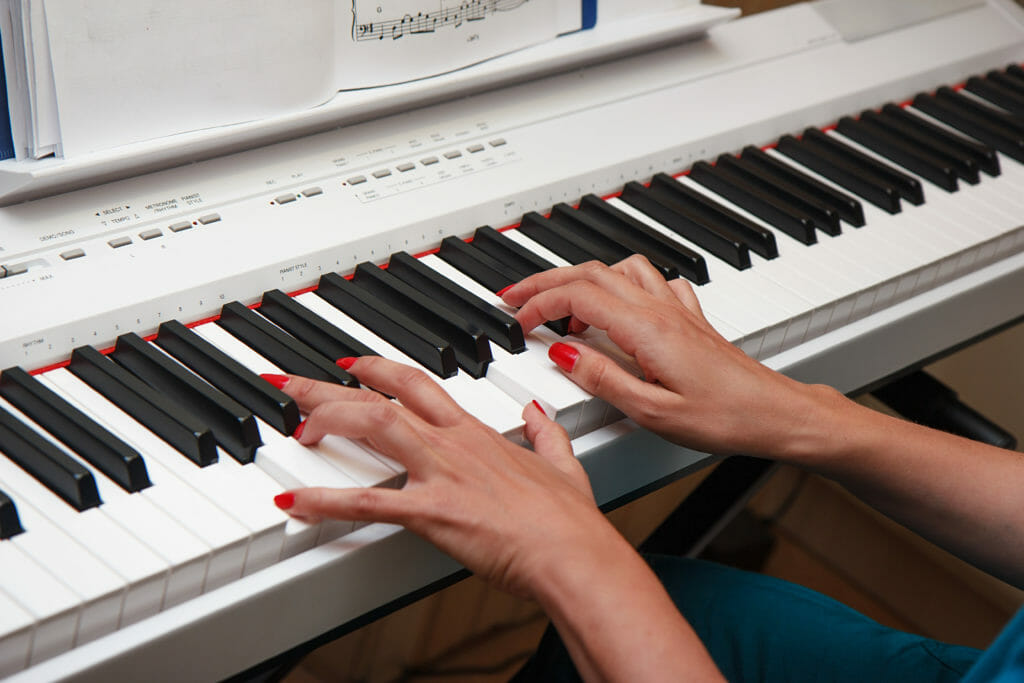
If your budget allows, you can go all-out and get an instrument with 88-fully weighted keys and an ivory and ebony finish. That way, you’ll enjoy the benefits of an electric keyboard while experiencing the authenticity of an acoustic.
Keys for Everyone
With countless manufacturers and models to choose from, you’ll definitely find a keyboard that fits your needs – you just have to spend some time figuring out what you want from the instrument.
Even though you won’t find a keyboard that will perfectly mimic the experience of a piano, it’s possible to get quite close. And who knows – the features, settings, styles, and general bells ‘n’ whistles you’ll find in a keyboard might open you up to a whole new way of thinking about playing piano!
Besides being a light, easy-to-play sidekick, keyboards are an excellent tool for expanding your musicality by providing many tones, beats, and features to get you thinking about different sounds and styles.

